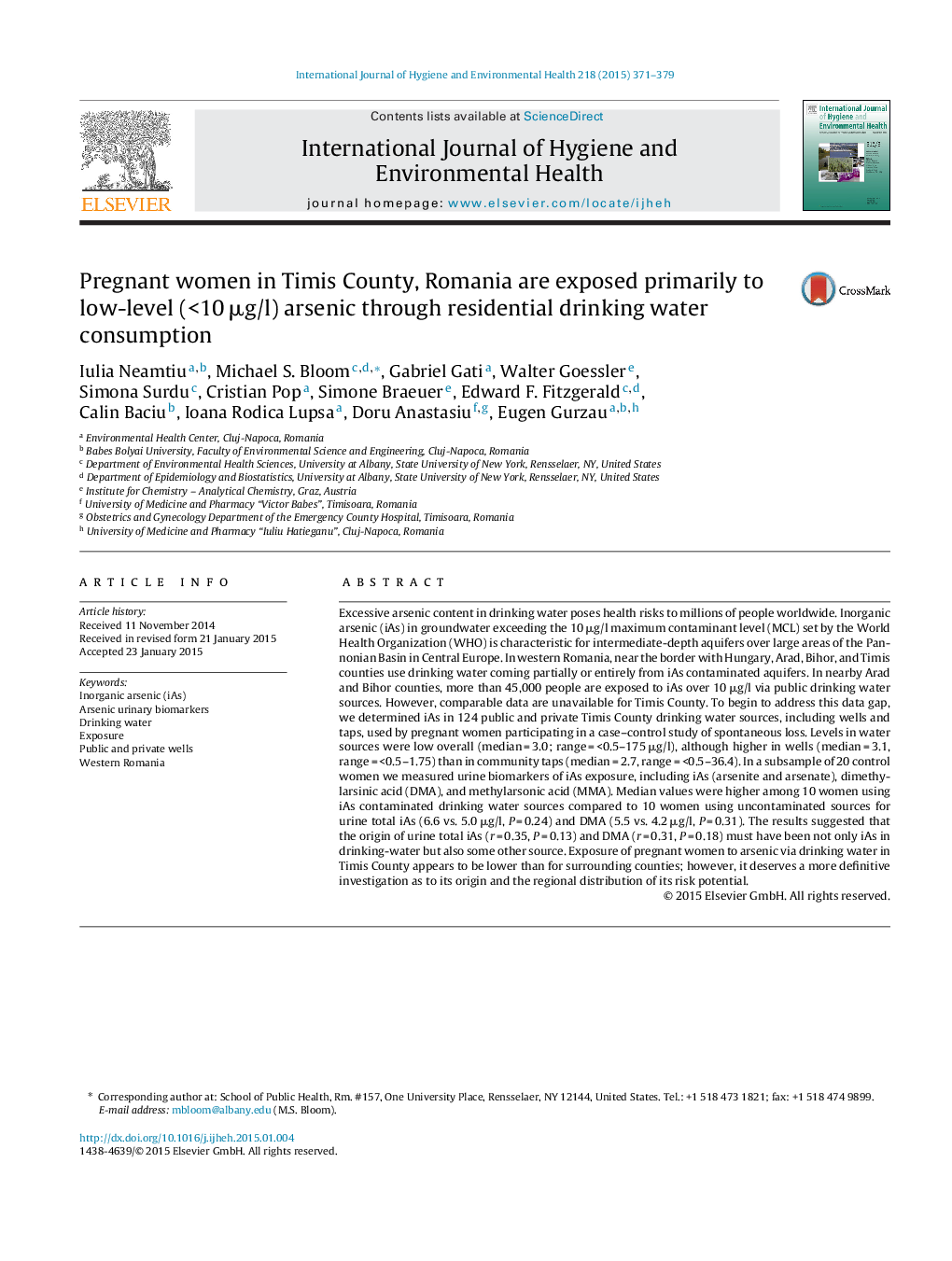| Article ID | Journal | Published Year | Pages | File Type |
|---|---|---|---|---|
| 5854592 | International Journal of Hygiene and Environmental Health | 2015 | 9 Pages |
Abstract
Excessive arsenic content in drinking water poses health risks to millions of people worldwide. Inorganic arsenic (iAs) in groundwater exceeding the 10 μg/l maximum contaminant level (MCL) set by the World Health Organization (WHO) is characteristic for intermediate-depth aquifers over large areas of the Pannonian Basin in Central Europe. In western Romania, near the border with Hungary, Arad, Bihor, and Timis counties use drinking water coming partially or entirely from iAs contaminated aquifers. In nearby Arad and Bihor counties, more than 45,000 people are exposed to iAs over 10 μg/l via public drinking water sources. However, comparable data are unavailable for Timis County. To begin to address this data gap, we determined iAs in 124 public and private Timis County drinking water sources, including wells and taps, used by pregnant women participating in a case-control study of spontaneous loss. Levels in water sources were low overall (median = 3.0; range = <0.5-175 μg/l), although higher in wells (median = 3.1, range = <0.5-1.75) than in community taps (median = 2.7, range = <0.5-36.4). In a subsample of 20 control women we measured urine biomarkers of iAs exposure, including iAs (arsenite and arsenate), dimethylarsinic acid (DMA), and methylarsonic acid (MMA). Median values were higher among 10 women using iAs contaminated drinking water sources compared to 10 women using uncontaminated sources for urine total iAs (6.6 vs. 5.0 μg/l, P = 0.24) and DMA (5.5 vs. 4.2 μg/l, P = 0.31). The results suggested that the origin of urine total iAs (r = 0.35, P = 0.13) and DMA (r = 0.31, P = 0.18) must have been not only iAs in drinking-water but also some other source. Exposure of pregnant women to arsenic via drinking water in Timis County appears to be lower than for surrounding counties; however, it deserves a more definitive investigation as to its origin and the regional distribution of its risk potential.
Keywords
Related Topics
Life Sciences
Environmental Science
Health, Toxicology and Mutagenesis
Authors
Iulia Neamtiu, Michael S. Bloom, Gabriel Gati, Walter Goessler, Simona Surdu, Cristian Pop, Simone Braeuer, Edward F. Fitzgerald, Calin Baciu, Ioana Rodica Lupsa, Doru Anastasiu, Eugen Gurzau,
